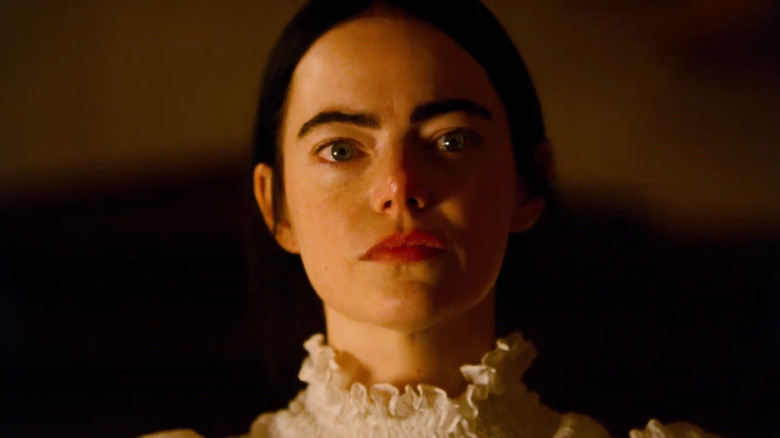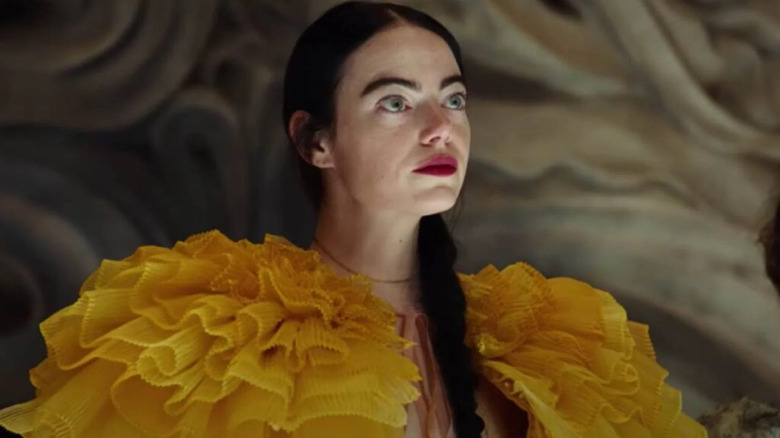How Videos Of Toddlers Helped Emma Stone Prepare For Poor Things
In Yorgos Lanthimos' new film "Poor Things," a Frankensteinian scientist named Godwin Baxter (Willem Dafoe) has, by luck, chanced upon the dead body of a nine-months-pregnant women floating down the Thames. He fishes the body out of the water and finds that the fetus inside of her is still alive. He removes the fetus, removes its brain, and implants the brain into the dead woman's skull. He then shocks her back to life. He names his resulting creation Bella (Emma Stone).
Bella, possessing an infant's brain, is a being of impulse and misunderstanding. She, like a child, staggers through the world getting used to her body and exploring the bizarre new sense input she's receiving. Even though she has the fully developed muscles of an adult, Bella's new brain still has to get used to walking. The first act of "Poor Things" sees Bella staggering around her father's over-designed estate with straight legs, stiff arms, and little coordination. She is often heard crashing into things as she staggers strangely through the hallways. It's an unusual piece of physical acting from Stone, who is trying to move like a toddler.
Indeed, in a back-and-forth interview with Bradley Cooper for Variety, Stone revealed that she studied toddlers in order to get her physical movements right. Toddlers, of course, have small, developing bodies, and their movements are based on their size, so Stone's direct translation of those movements lends Bella a surreal quality and sees "Poor Things" emerge with a bizarre fable-like tone. Stone admitted that during the film's rehearsals, she would be assigned day-long walking practice.
Walk like a toddler
Cooper asked her what she did to prepare for such an odd role, and Stone laid it out:
"We went to Budapest for a monthlong rehearsal process with the other actors. And then we would have solo rehearsals with just [Lanthimos] and me where we would work on the walk for an entire day. I went into it being more literal than I needed to be, watching videos of a toddler learning to walk or how someone says their first words."
The toddler videos, it turns out, gave Stone good ideas as to how to move, but she eventually concluded that she needed to develop a slightly different relationship to her movements than a toddler might. Ultimately, it was a creative process that could be invented from the ground up. Bella's final movements are, one might notice, only about 40% toddler and 60% Stone's and Lanthomos' own creative caprices. She continued:
"Because [Bella is] in this fully formed, adult healthy body, her relationship to not knowing how to walk — it's not even like you could compare it to someone who's just been in an accident and is recovering and learning to walk. She's completely fine. It's just her brain that hasn't caught up, which was great because there was nothing to compare it to."
As the film progresses, Bella eventually learns to move more gracefully. Eventually, "Poor Things" emerges as a drama about a woman retaining mastery over her body in a world that always seeks to exploit or commodify it. Stone's movements weren't just a character choice but vital to the themes of the film.
"Poor Things" is currently playing in theaters.

